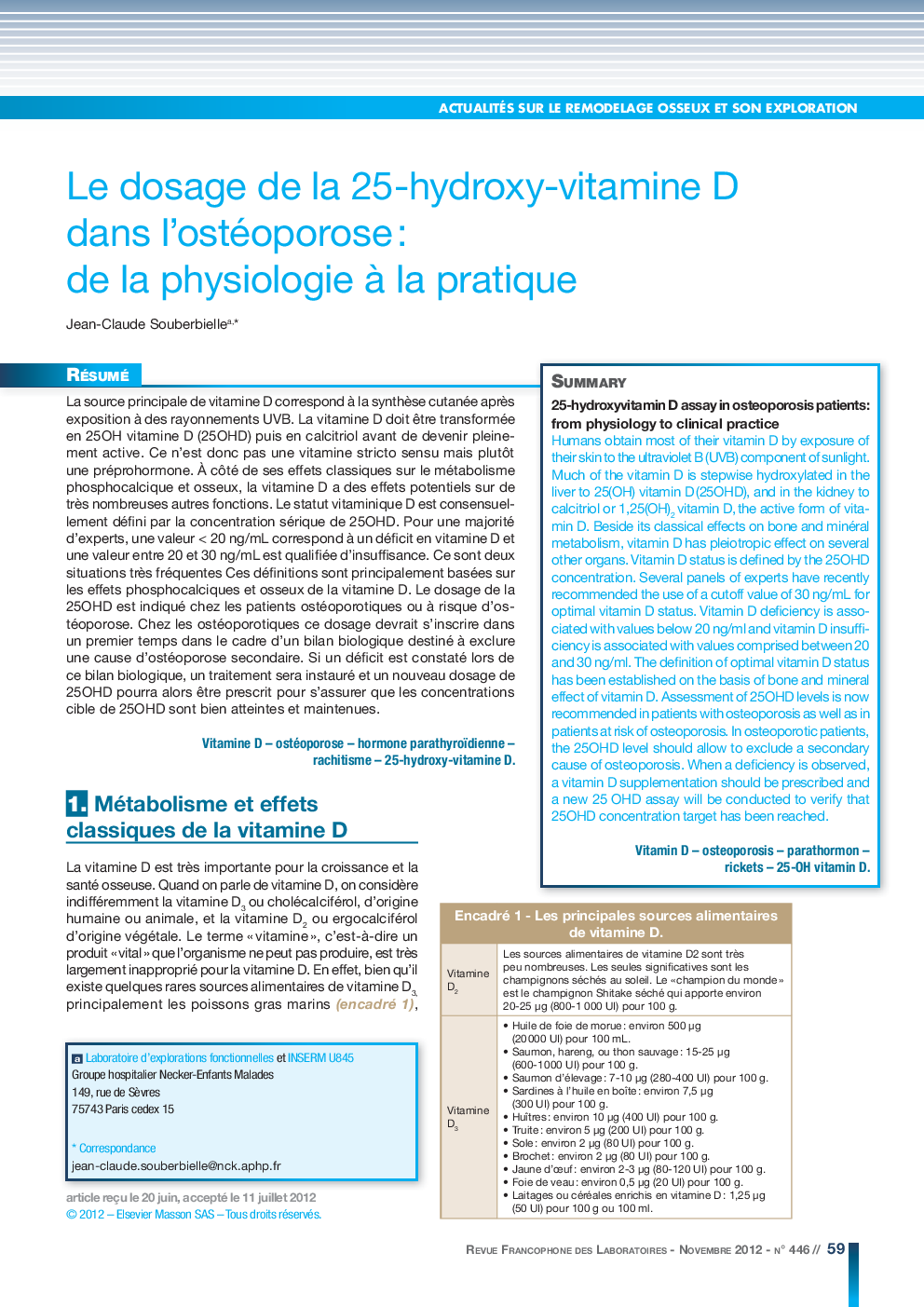| Article ID | Journal | Published Year | Pages | File Type |
|---|---|---|---|---|
| 7653297 | Revue Francophone des Laboratoires | 2012 | 6 Pages |
Abstract
Humans obtain most of their vitamin D by exposure of their skin to the ultraviolet B (UVB) component of sunlight. Much of the vitamin D is stepwise hydroxylated in the liver to 25(OH) vitamin D (25OHD), and in the kidney to calcitriol or 1,25(OH)2 vitamin D, the active form of vitamin D. Beside its classical effects on bone and minéral metabolism, vitamin D has pleiotropic effect on several other organs. Vitamin D status is defined by the 25OHD concentration. Several panels of experts have recently recommended the use of a cutoff value of 30Â ng/mL for optimal vitamin D status. Vitamin D deficiency is associated with values below 20Â ng/ml and vitamin D insufficiency is associated with values comprised between 20 and 30Â ng/ml. The definition of optimal vitamin D status has been established on the basis of bone and mineral effect of vitamin D. Assessment of 25OHD levels is now recommended in patients with osteoporosis as well as in patients at risk of osteoporosis. In osteoporotic patients, the 25OHD level should allow to exclude a secondary cause of osteoporosis. When a deficiency is observed, a vitamin D supplementation should be prescribed and a new 25 OHD assay will be conducted to verify that 25OHD concentration target has been reached.
Keywords
Related Topics
Physical Sciences and Engineering
Chemistry
Analytical Chemistry
Authors
Jean-Claude Souberbielle,
